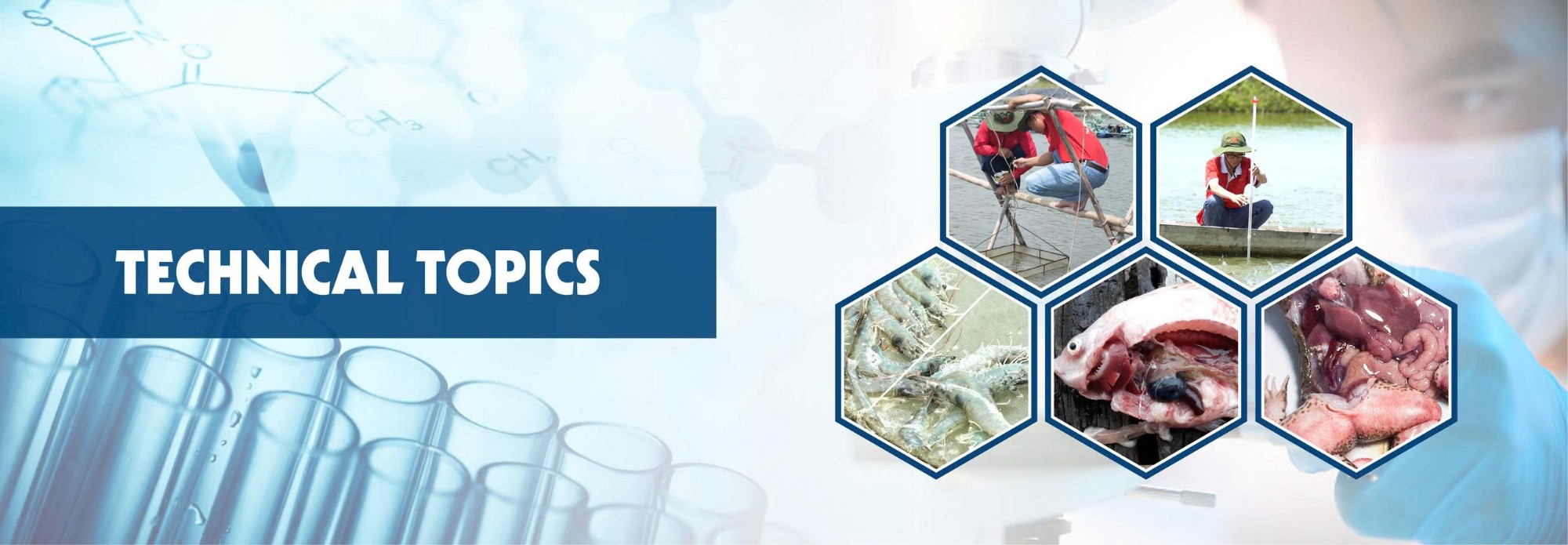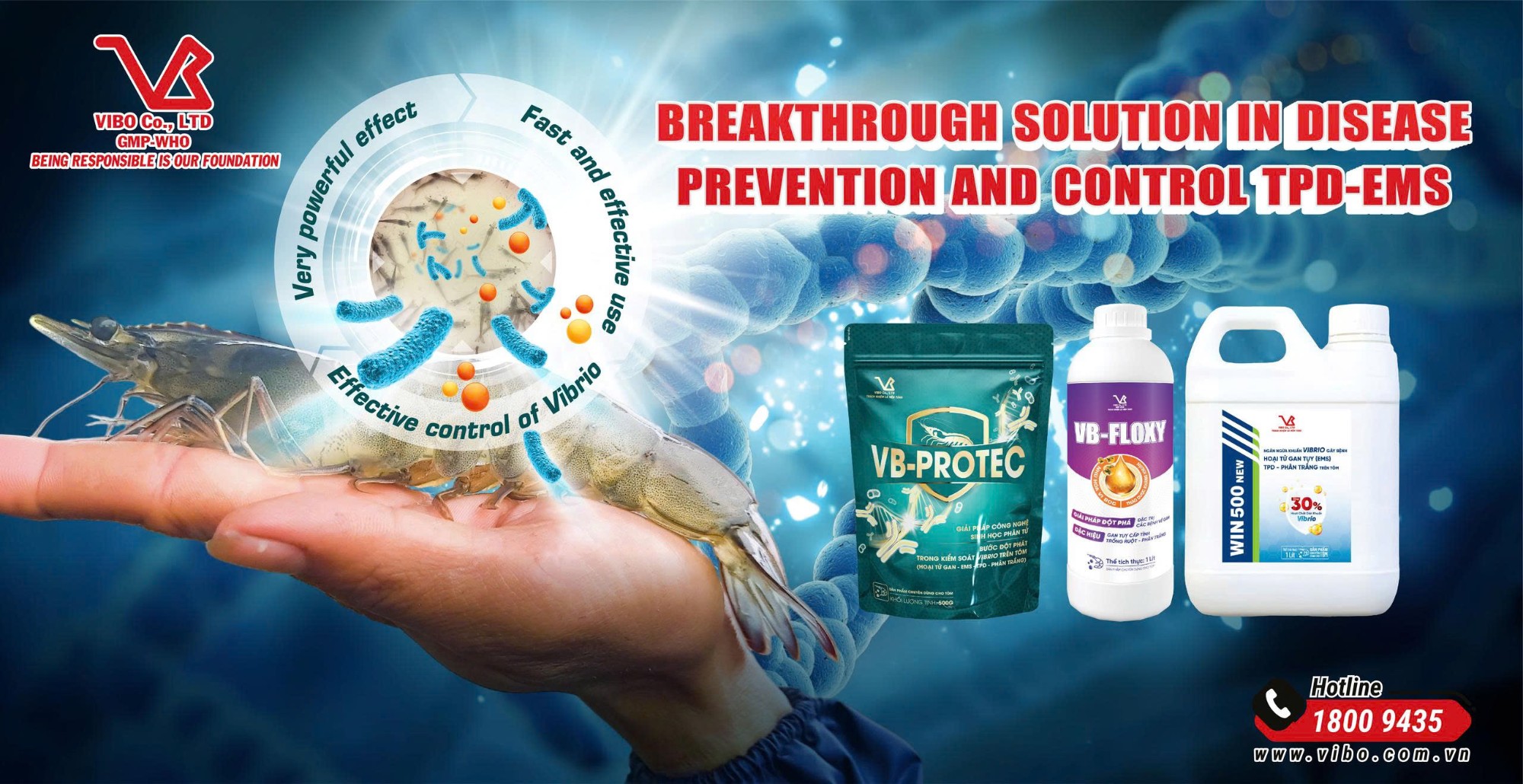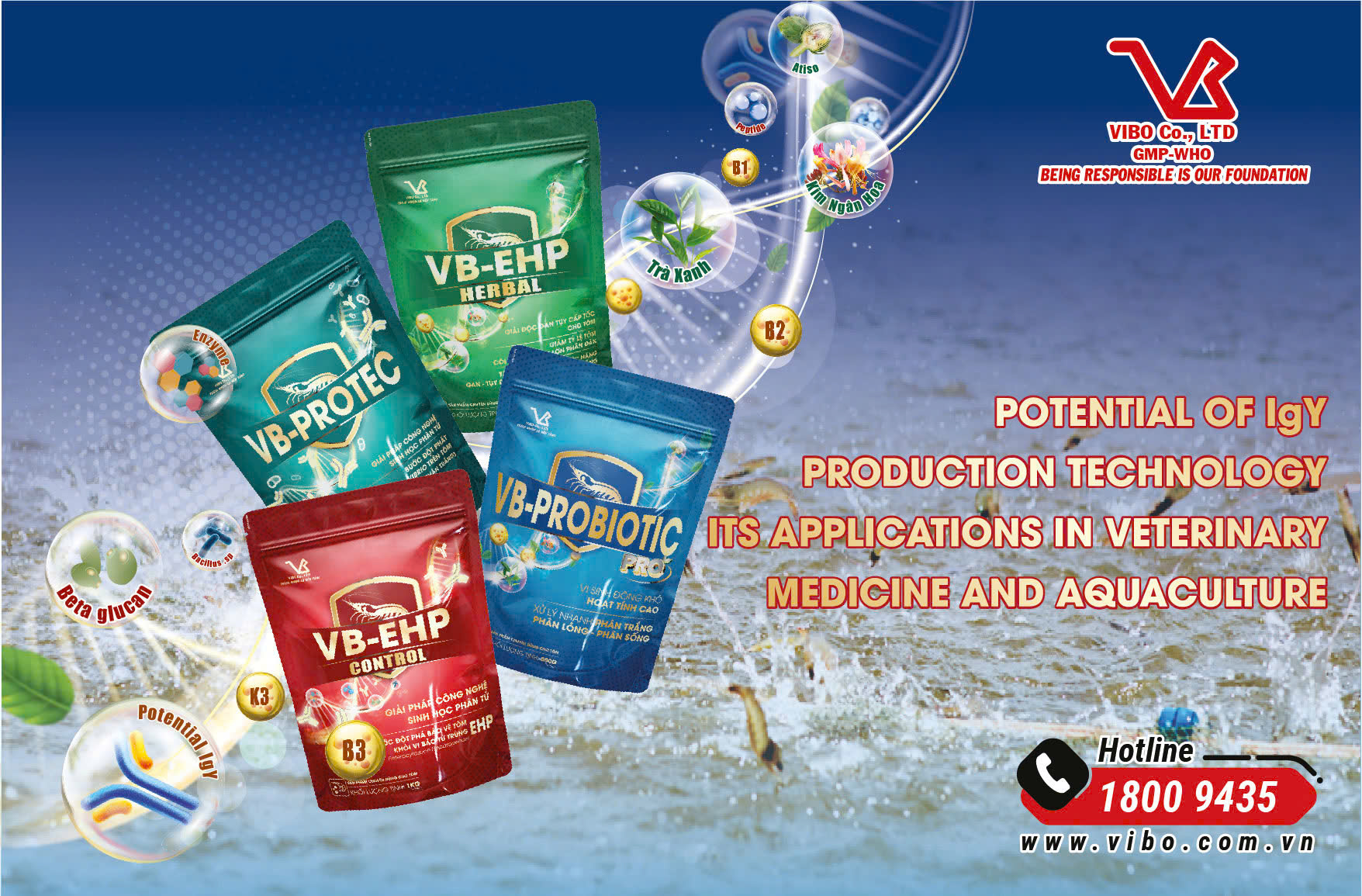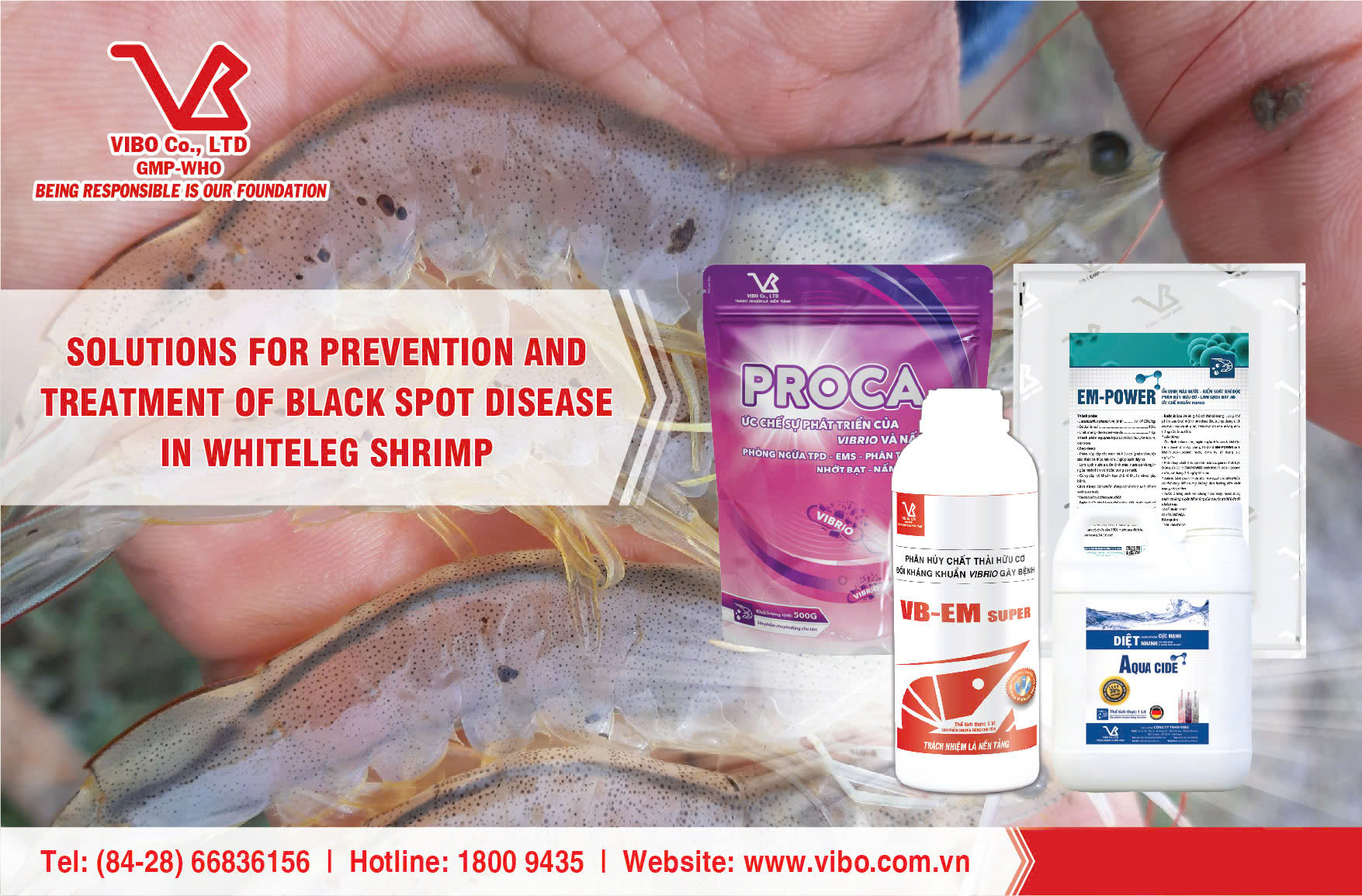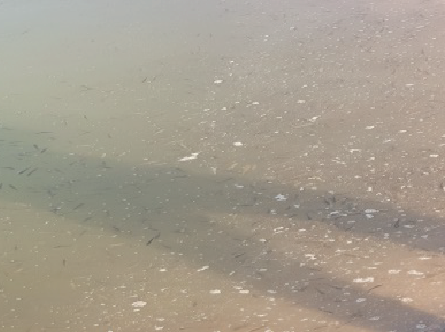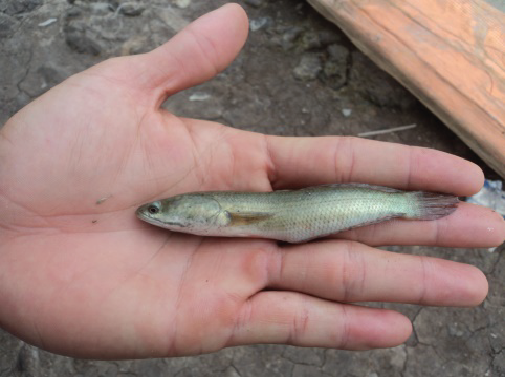- Address: Lot No. 20, Zone G, D1 Street, An Ha Industrial Park, Tan Vinh Loc Commune, Ho Chi Minh City
- Phone: (84-28) 668.36156 / 668.36158
- Hotline: 1800.9435
- Fax: (84-28) 3620.4694
- Email: vibo@vibo.com.vn
- Website https://vibo.com.vn/
DISEASE PREVENTION PROCEDURES FOR SNAKEHEAD
I. CAUSE OF DISEASE
Scientists have not identified the cause of the disease, but only diagnosed the following factors: (1) Fish nutritional imbalance; (2) the stocking density is too thick; (3) End-feeding for a long time continuously; (4) The pond water environment is polluted, there are many environmental toxins, heavy metal contamination and chemical residues; (5) Use antibiotic treatment continuously.
II. SIGNS AND CONDITIONS OF DISEASE
- The fish is lethargic on the water but still agile, the skin and scales have many alternating black and white streaks, slime, some darkening, bleeding skin, fins and anus are swollen red; root bleeding.
- The disease occurs all year round, outbreaks in the dry season, hot weather.

Figure 1: Expression of the outside and inside the fish is white body, red intestine.
III. DISEASE PREVENTION PROCEDURES
- Day 1: In the morning, splash 1L of GLUMAX/5,000m3 of water.
- Day 2, 3: Get 1 can of 5L VB-EM/3.000m3 of water, in the morning. Feeding 1L LIVERMIN pro + 0.5L BIO-X pro for 10 tons of fish.
- Day 4: Feed 1L LIVERMIN pro + 0.5L BIO-X pro for 10 tons of fish.
- Day 6: Get 1 can of 5L VB-EM/3,000m3 of water, in the morning.
- Day 9: Get 1 can of 5L VB-EM/3,000m3 of water, in the morning. Feeding 1L LIVERMIN pro + 0.5L BIO-X pro for 10 tons of fish.
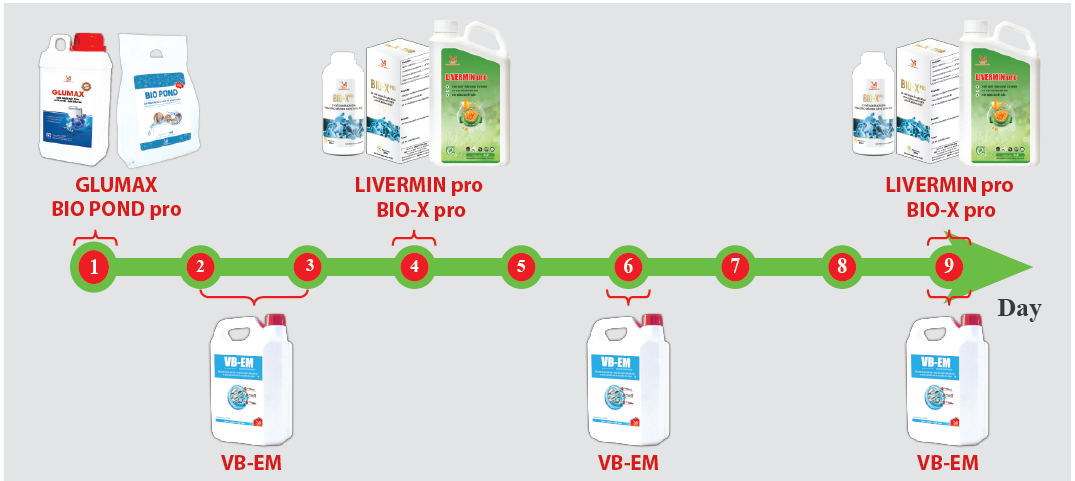
* Note:
+ During the farming process, if the fish is infected with bacteria or parasites, then handle it, after 1 day, add microorganisms.
+ The distance between 2 times using microorganisms can change according to water quality, weather.
Other Technical Topics
21
THG08
TOXIC GAS MANAGEMENT IN SHRIMP POND
To manage toxic gases in shrimp ponds, focus on a two-pronged approach: proactive prevention and reactive treatment. Proactive methods include controlling feed to avoid excess nutrients, ensuring good aeration, and maintaining water quality parameters like pH and alkalinity. Reactive measures involve water exchange, using probiotics, and applying chemicals like lime or zeolites to break down waste and neutralize toxic gases like hydrogen sulfide and ammonia.
14
THG06
SOLUTIONS FOR PREVENTION AND TREATMENT OF INTESTINAL BACTERIAL INFECTIONS IN SHRIMP
The shrimp intestine is one of the most important organs in shrimp physiology. However, due to its simple structure, it is highly susceptible to pathogenic invasion. Intestinal bacterial infections commonly lead to several widespread problems such as segmental gut necrosis, enteritis, white feces syndrome, and empty gut, all of which directly affect productivity and crop performance
03
THG03
PREVENTION AND TREATMENT SOLUTIONS FOR TRANSLUCENT POST-LARVAE DISEASE (TPD) IN SHRIMP
Translucent Post-Larvae Disease (TPD), also known as “Glass Post-Larvae Disease,” is an emerging disease affecting Penaeus vannamei. It was first reported in March 2020 in China and is characterized by extremely high mortality rates, particularly in shrimp at the PL4–PL7 stages. The disease is caused by a highly virulent strain of Vibrio parahaemolyticus, designated VpTPD, which has resulted in severe economic losses—impacting 70–80% of hatcheries as well as shrimp farmers. The disease spreads rapidly and can cause up to 90% mortality within 2–3 days, leading to catastrophic financial losses if not promptly managed.
31
THG05
POTENTIAL OF IgY PRODUCTION TECHNOLOGY AND ITS APPLICATIONS IN VETERINARY MEDICINE AND AQUACULTURE
Immunoglobulin of the yolk is an immune globulin produced by hens to protect chicks during the first weeks of life against emerging pathogens. It is functionally equivalent to immunoglobulin G found in the colostrum of mammals. IgY is a completely natural antibody product. A primary goal of animal welfare is to reduce painful procedures. IgY technology meets this requirement because antibodies are collected non-invasively through egg collection rather than blood sampling, which causes stress and pain in mammals. IgY technology also offers significant economic advantages since raising hens is far more cost-effective than raising rabbits, sheep, or horses for antibody production.
31
THG01
PROTOCOL FOR PREVENTION AND TREATMENT OF ACUTE HEPATOPANCREATIC NECROSIS DISEASE (AHPND) IN SHRIMP
A protocol for preventing and treating Acute Hepatopancreatic Necrosis Disease (AHPND) in shrimp involves biosecurity, farm management, and advanced techniques like phage therapy and probiotics. Prevention focuses on stringent biosecurity to prevent pathogen introduction, while management techniques include regular water changes, siphoning, and careful feed optimization. If the disease is confirmed, treatment may involve disinfecting the pond and its contents, and future efforts are exploring technologies like vaccination and immune enhancement through plant-based compounds.
24
THG08
SOLUTIONS FOR PREVENTION AND TREATMENT OF BLACK SPOT DISEASE IN WHITELEG SHRIMP
Prevention of black spot disease in whiteleg shrimp involves maintaining good water quality, preventing injuries, managing feed residue, and using biosecurity measures. Treatment can include post-harvest dipping in solutions like sodium bisulfite or ascorbic acid, and in some cases, in-pond treatments such as slaked lime or probiotics may be used. Improve pond conditions: Maintain good water quality and clean pond bottoms to remove waste and feed residue. Biosecurity: use disease-free seed shrimp, disinfect water before filling ponds, prevent wild shrimp, crabs, and clams from entering the pond.
04
THG11
Prevention of White Feces Syndrome, White Gut Disease and White Muscle Disease in Shrimp
Shrimp culture tends to now be developed intensively with upgraded technology for higher and successful production. On many occasions, shrimp culture is affected by various diseases and experienced in the loss of crop or reduced the production level by various reasons, writes Mr. Prakash Chandra Behera, India. Intensive and semi-intensive aquafarming accompanies several disease problems often due to opportunistic pathogens as evident from general aquaculture. High stocking densities, high food inputs, and other organic loads stimulate the selection and proliferation of opportunistic pathogens like bacteria, viruses, fungi, protozoa, etc.
04
THG11
B. subtilis DSM33018 is able to degrade pirB and alleviates AHPND in Artemia
Early mortality syndrome (EMS) or acute hepatopancreatic necrosis disease (AHPND), is a penaeid shrimp disease that causes serious economic losses and significant mortality, up to 100%, in cultured shrimp species. The dramatically high mortality rates in infected shrimp are caused by dysfunction and destruction of the hepatopancreas (Lightner et al. 2014). There is no inflammatory response to the causative Vibrio spp., because AHPND is elicited by a toxin (Han et al. 2015), which is encoded by a plasmid (Yang et al. 2013; Tran et al. 2013). Various Vibrio spp., not only V. parahaemolyticus were demonstrated to carry this pathogenic plasmid.
11
THG12
THE PROCESS OF HANDLING FINGERLING FISHES WHEN STOCKING THEM INTO THE POND
Fish when imported to the pond often lose a lot due to:
- Construction during transportation.
Stress due to changing living environment.
- Easy to get bacteria and fungi to enter the body.
11
THG12
THE CLEANING WORMS, FLUKES IN GUT OF SNAKEHEAD FISH PROCESS
- Internal parasites disease on snakehead fish caused by hookworm, roundworm, tapeworm parasitizing in fish intestine.
VIBO CO.,LTD




